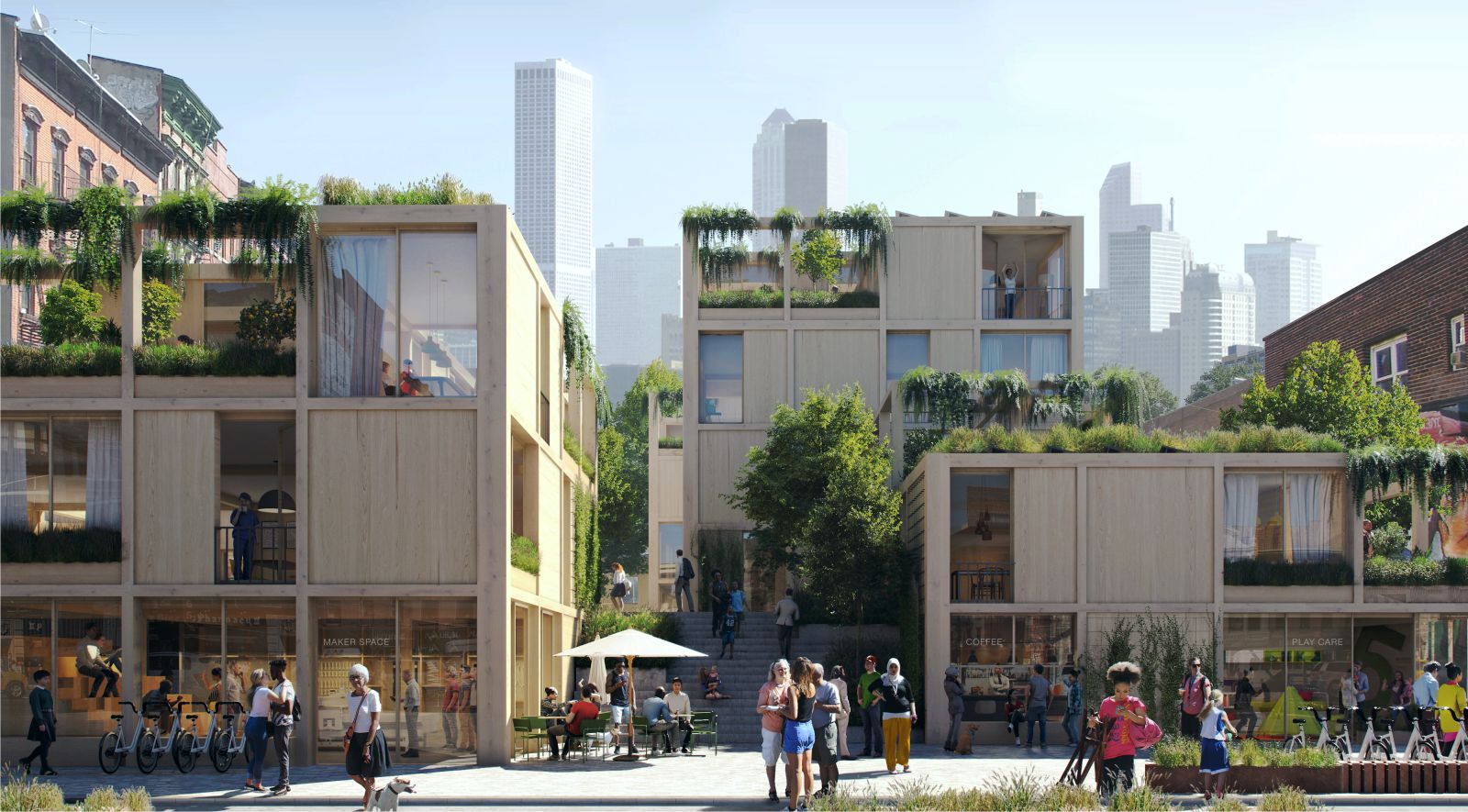At this year’s Democratic Design Days—IKEA’s annual event where the brand introduces its upcoming collections and collaborations—SPACE10 presents The Urban Village Project, a vision for how to design, build and share our future homes, neighbourhoods and cities in order to improve our quality of life. Specifically, it aims to make our everyday more liveable, sustainable and affordable. The Urban Village Project envisions:
- Cross-generational shared living communities in the hearts of our cities with flexible, high quality homes connected to a variety of shared services and facilities; and a digital interface to support everyday needs
- A lower entry point into the housing market. This would come from rethinking the way we design and finance our homes; introducing new subscription-based models; and offering the added opportunity to earn equity in where you live.
- A modular building system that can be pre-fabricated, flat-packed and even disassembled. This ensures a more sustainable and CO2-reducing construction method and a circular approach to the management and life cycle of our buildings.
More liveable
The Urban Village Project is a vision for creating shared living communities for people of all ages, backgrounds, and living situations. The objective is to enable a better everyday life through the multiple benefits of living in a tight-knit community, with shared facilities and services, – like day-care, urban farming, communal dining, fitness, and shared transportation. These benefits not only offer a sense of belonging: they’re proven to boost health and happiness, too.
More Sustainable
The Urban Village Project would make sustainable living a seamless part of daily life through integrated solutions like water harvesting, clean energy production, recycling, local food production and localised composting. Even the whole architectural framework is rooted in sustainable materials and a circular approach to our built environment.
More affordable
The standardised modular building system of The Urban Village Project can be pre-fabricated, mass-produced and flat-packed— all of which would help drive construction costs down. But just as importantly, The Urban Village Project challenges existing models of development, and seeks to finance the construction through partners who look for long term investments. Combining this with democratic setups inspired by community land trusts and co-operatives, The Urban Village Project could secure the interests of the community and allow cheaper homes to enter the market.
The Urban Village Project also seeks to make life more affordable by enabling people to share more, pool resources, and unlock better deals on daily needs to reduce the residents’ overall living costs. By also introducing a new model of ownership, residents are enabled to buy ‘shares’ in the property, if they’d want to and when they could. This means that people could access ownership progressively, and cash in later as the property value increases.
New modular building system
The architecture of the Urban Village Project would be based on a standardised modular building system and made from cross-laminated timber – a wood that comes with huge environmental advantages and outperforms steel and concrete on multiple levels. It’s also been proven that living in buildings made of wood creates better health and wellbeing for people. The modular system can be used to build everything from town houses to high rises, from single person homes to spaces that house several loved ones under the same roof.
Designed for disassembly
The modular building system would allow for almost all components and materials in the building to be disassembled and easily replaced, reused and recycled over the lifespan of the building. Even the building itself could be retrofitted or disassembled and repurposed. Not only is this better for the planet: it also gives people a lot more flexibility and the freedom to add to, adapt and edit their home whenever they wish. Source by SPACE10 and EFFEKT Architects and images Courtesy of EFFEKT Architects.

Image © EFFEKT Architects for SPACE10 
Image © EFFEKT Architects for SPACE10 
Image © EFFEKT Architects for SPACE10 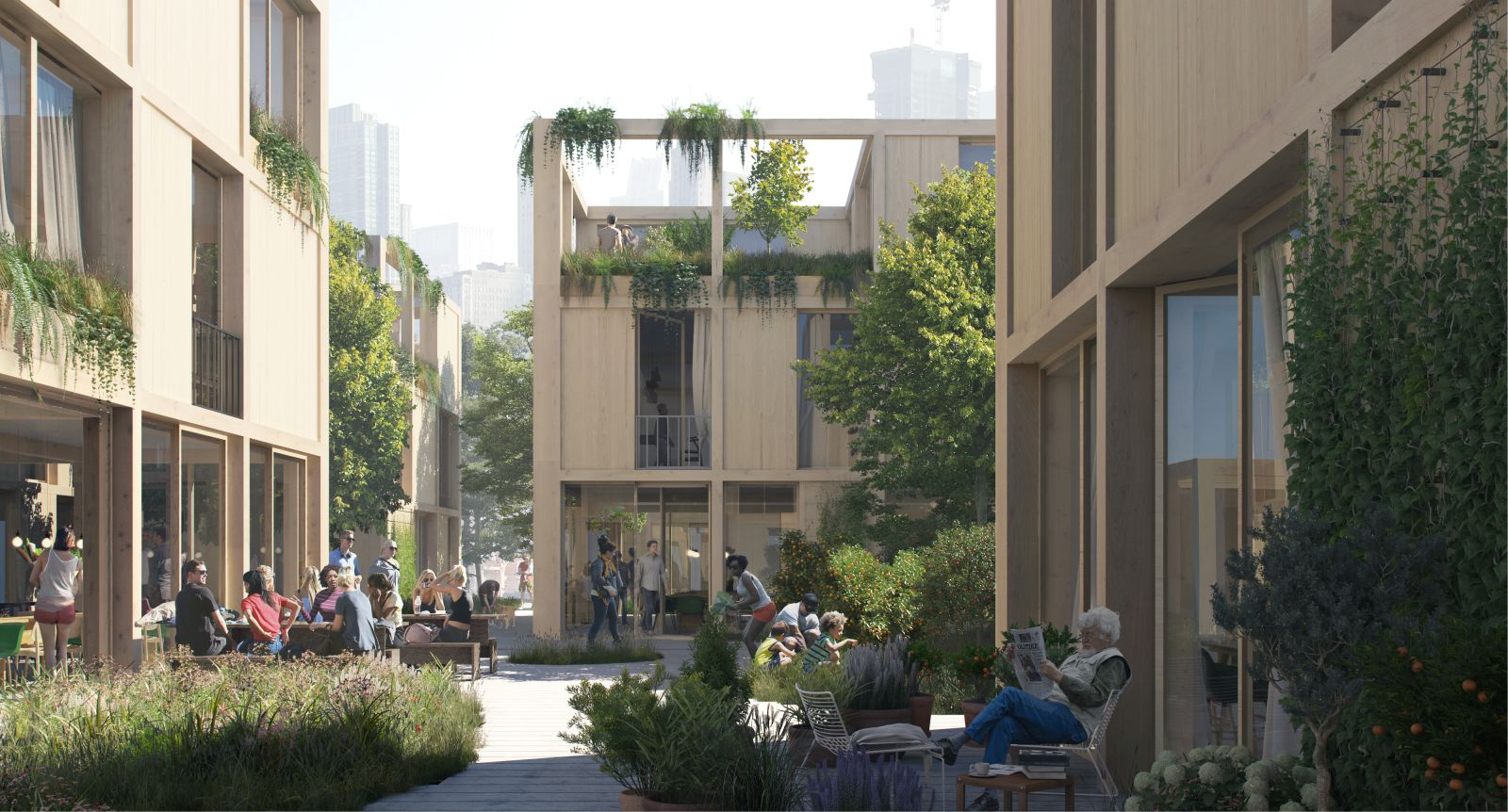
Image © EFFEKT Architects for SPACE10 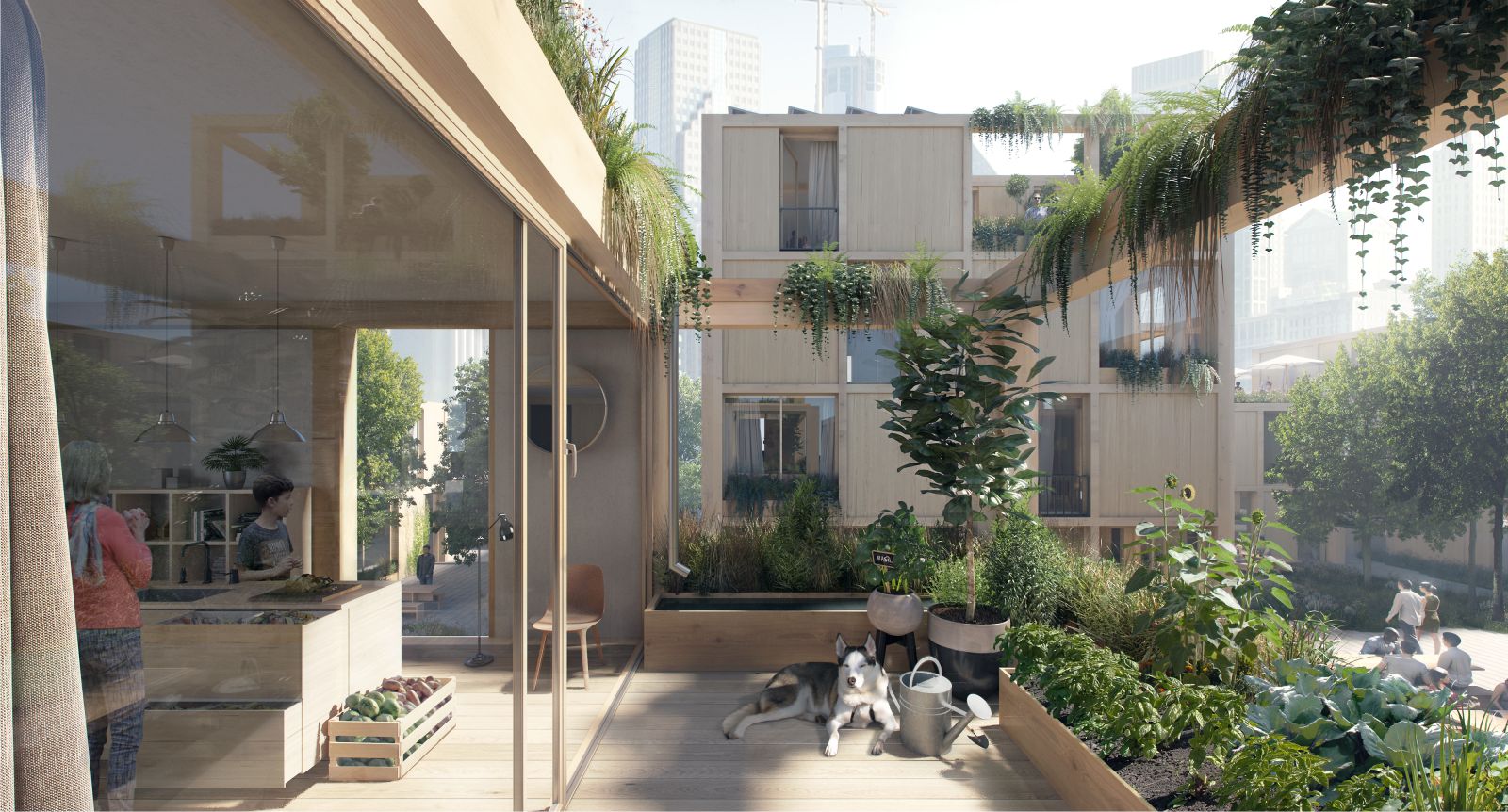
Image © EFFEKT Architects for SPACE10 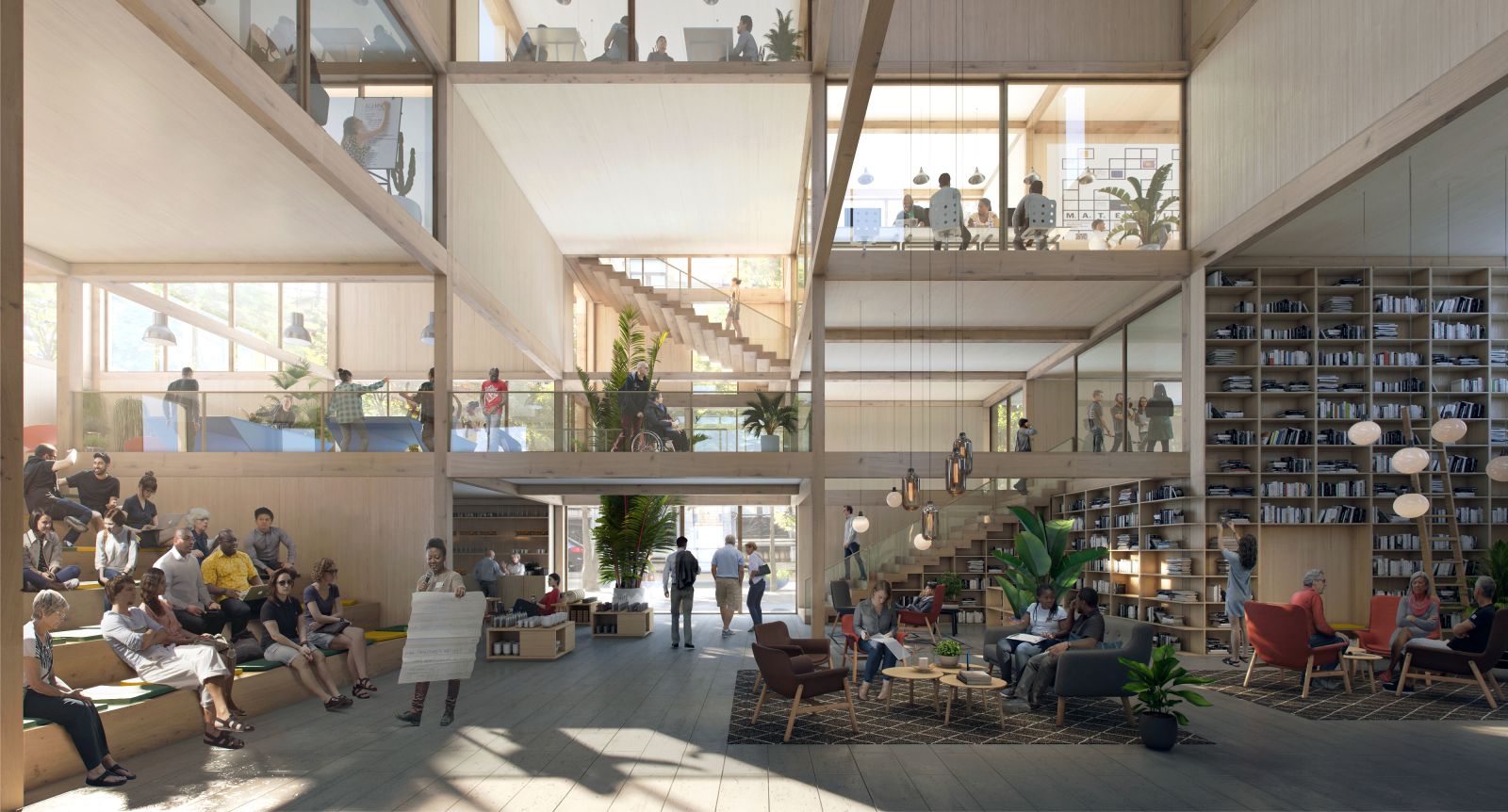
Image © EFFEKT Architects for SPACE10 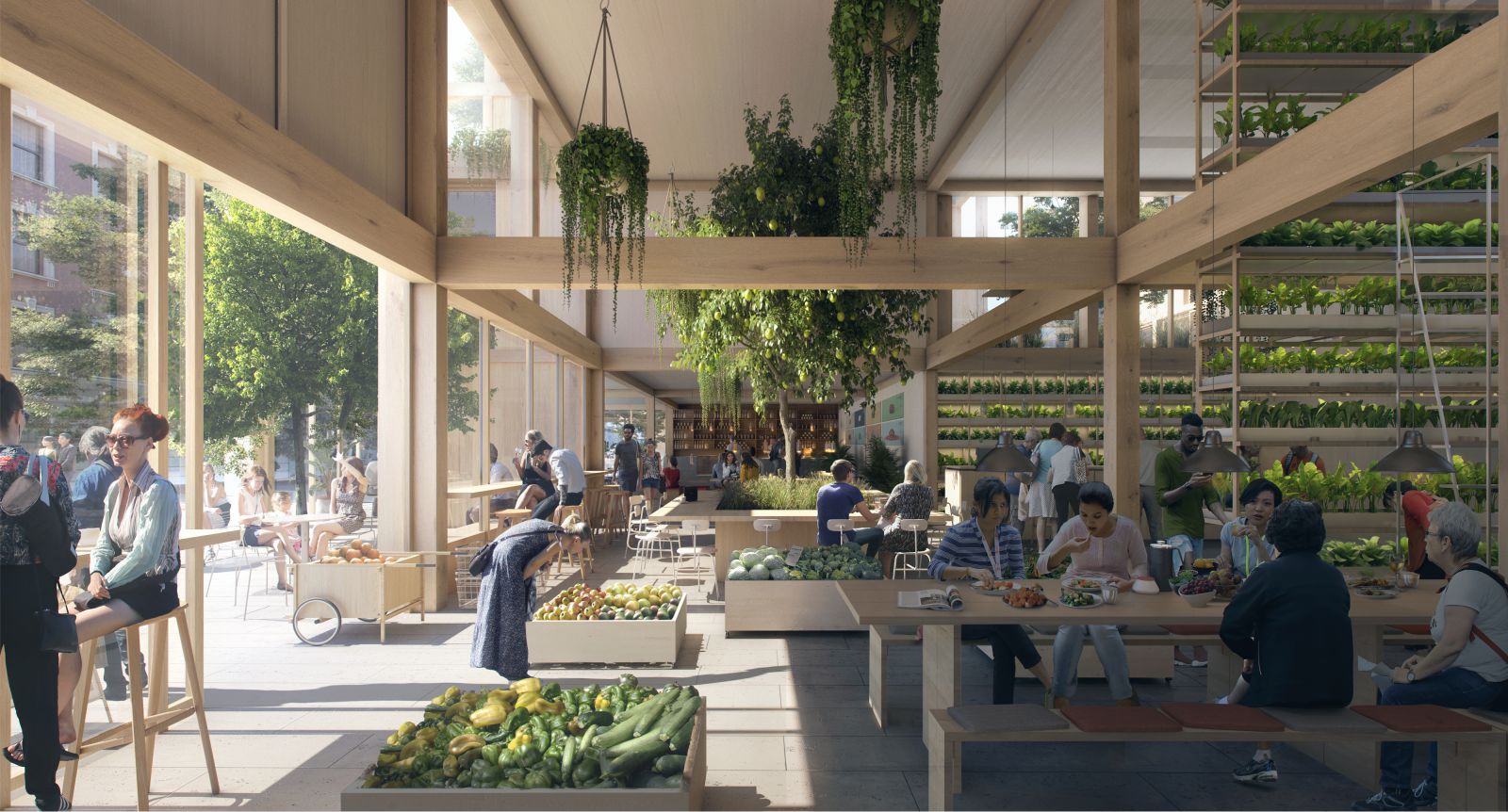
Image © EFFEKT Architects for SPACE10 
Scaleable System 
The Urban Village 
Exploded axonometric 
Prefabricated Assembly 
Standardised module CLT 
Built in Wood 
Components of a home 
Designed for disassembly 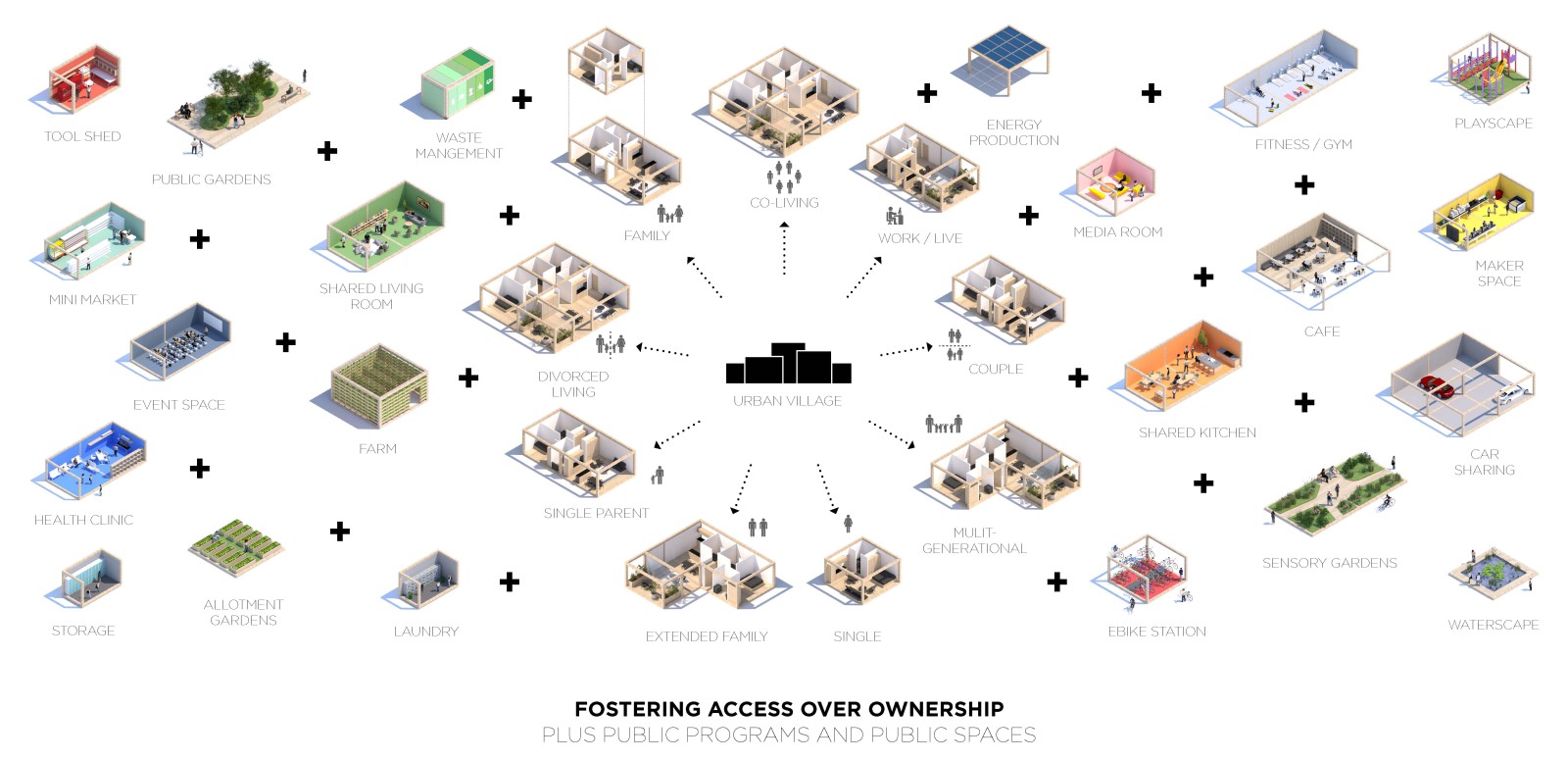
Liveability 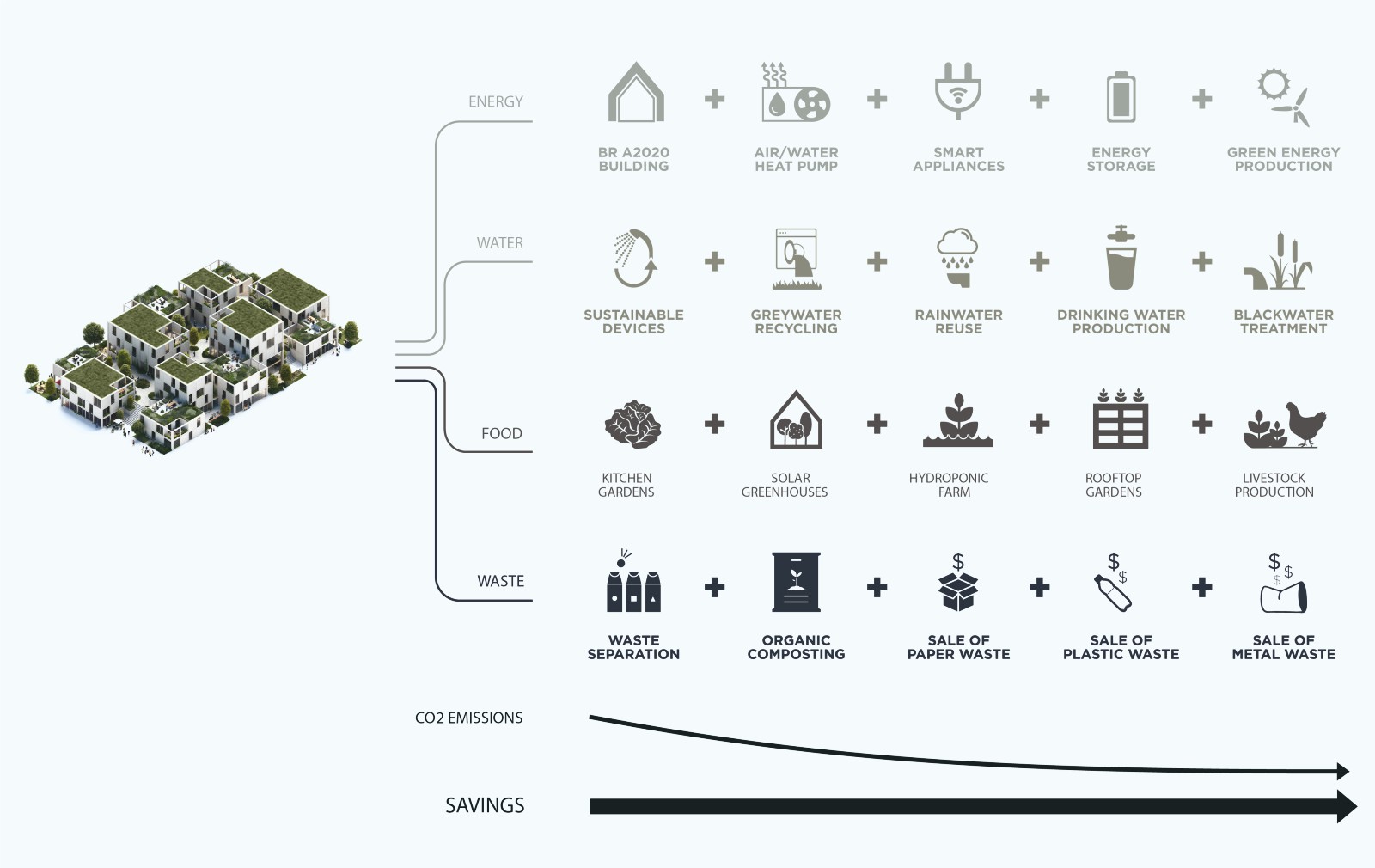
Resource management 
Digital Platform

